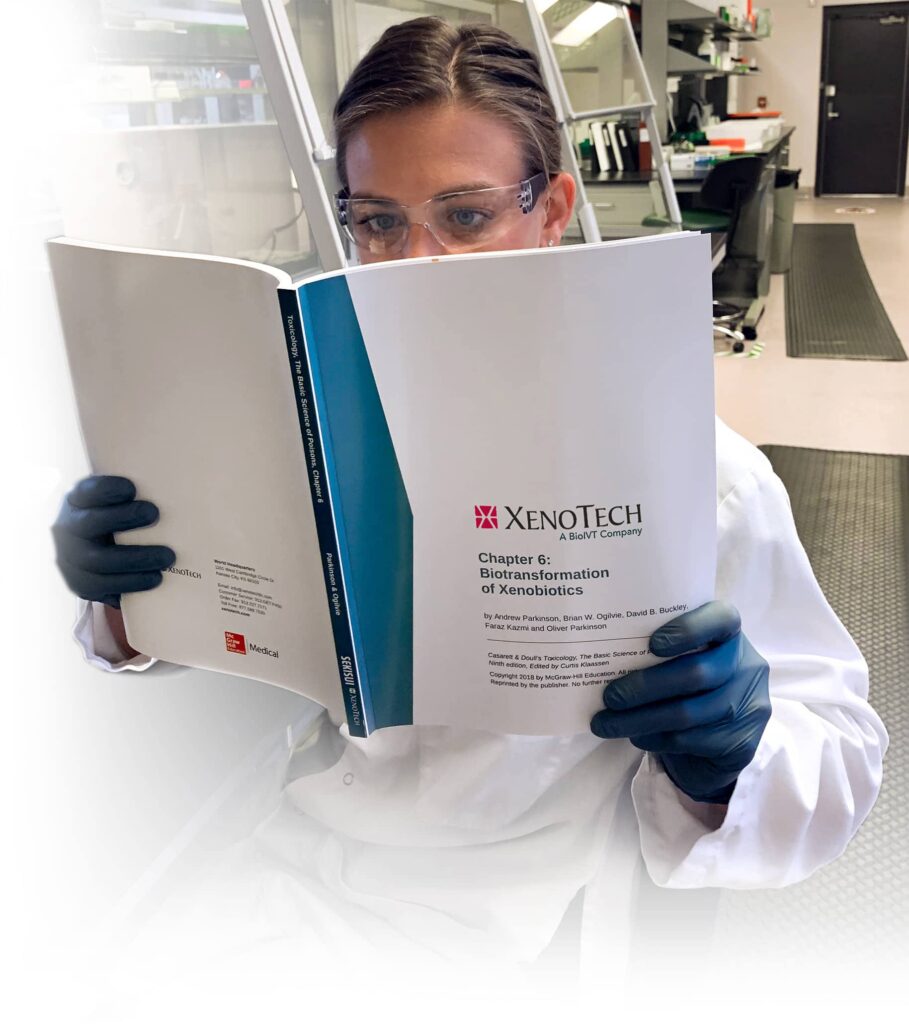
Comparing Ki and IC50 Values
Full Title
Comparison of Ki and IC50 values for prototypical and clinically-relevant probe substrates of the hepatic transporters OATP1B1 and OATP1B3
Abstract
Organic anion transporting polypeptides 1B1 and 1B3 (OATP1B1, SLCO1B1 and OATP1B3, SLCO1B3) are transmembrane proteins expressed in the sinusoidal membrane of human hepatocytes and are capable of transporting a wide range of hydrophilic molecules from the blood into the hepatocyte for subsequent metabolism and/or elimination. Inhibition of OATP1B1 and/or OATP1B3 by xenobiotics can lead to pharmacokinetic drug-drug interactions whereby the exposure (AUC) of a co-administered victim drug (substrate) is increased in the presence of the inhibitory drug. For example, orally administered cyclosporin inhibits OATP-mediated uptake of pravastatin-, a prototypical in-vivo probe substrate of OATP, which causes a 9.9-fold increase in AUC. The increase in systemic exposure to narrow safety margin drugs (e.g. statins) results in undesired side-effects and dose-limiting toxicities. Therefore, the FDA and EMEA recommend the evaluation of new drug candidates for the potential to inhibit OATP1B1 and OATP1B3 which is often first evaluated with in vitro test systems, typically IC50 experiments.
The recent EMEA Guideline on the Investigation of Drug Interactions (2012) recommends the calculation of Ki values when evaluating the inhibition of a transporter by investigational drugs. Although Ki values have been reported for inhibitors of various uptake transporters, the difficulty of experimental design coupled with vigorous mathematical extrapolation can make the determination of intrinsic Ki values difficult and oftentimes reverts to the determination of extrinsic IC50 values. Additionally, it is important to consider clinically relevant substrates rather than prototypical probe substrates when evaluating potential DDIs of investigational drugs at the transporter level. In this study, Ki and IC50 values were determined for one prototypical (estradiol-17β-glucoronide (E2G)) and one clinically-relevant (pravastatin) substrate of the hepatic uptake transporters OATP1B1 and OATP1B3 with an experimental design incorporating multiple substrate and inhibitor concentrations.
This poster was presented at the annual ISSX meeting in 2013.